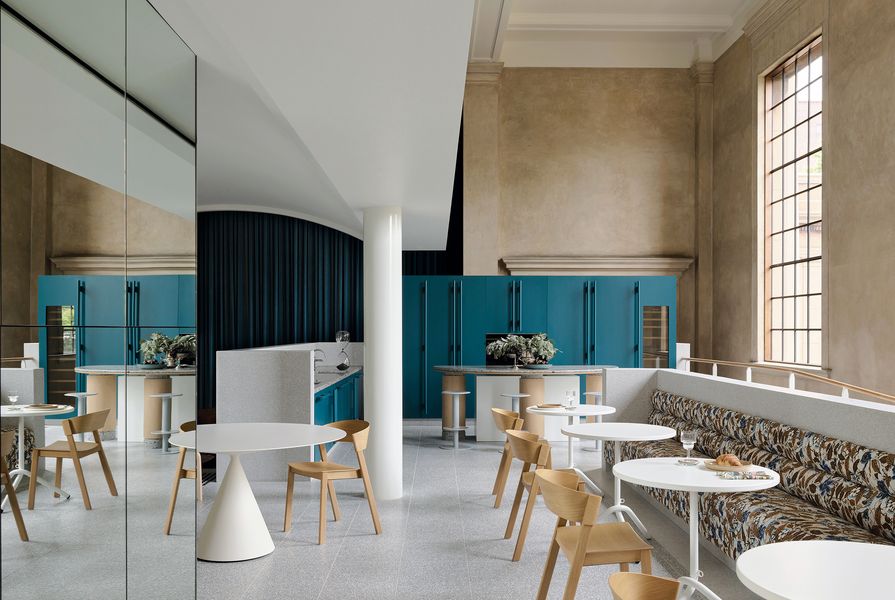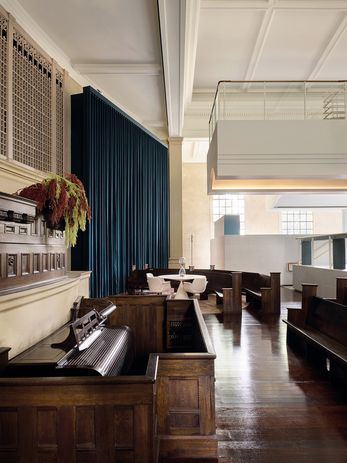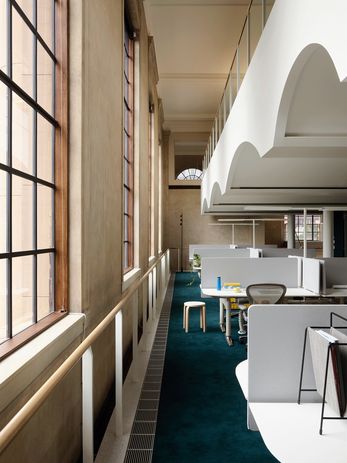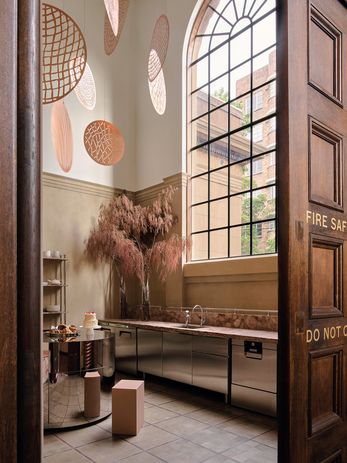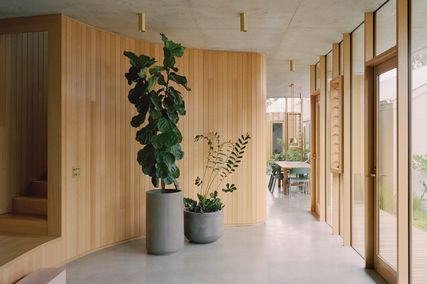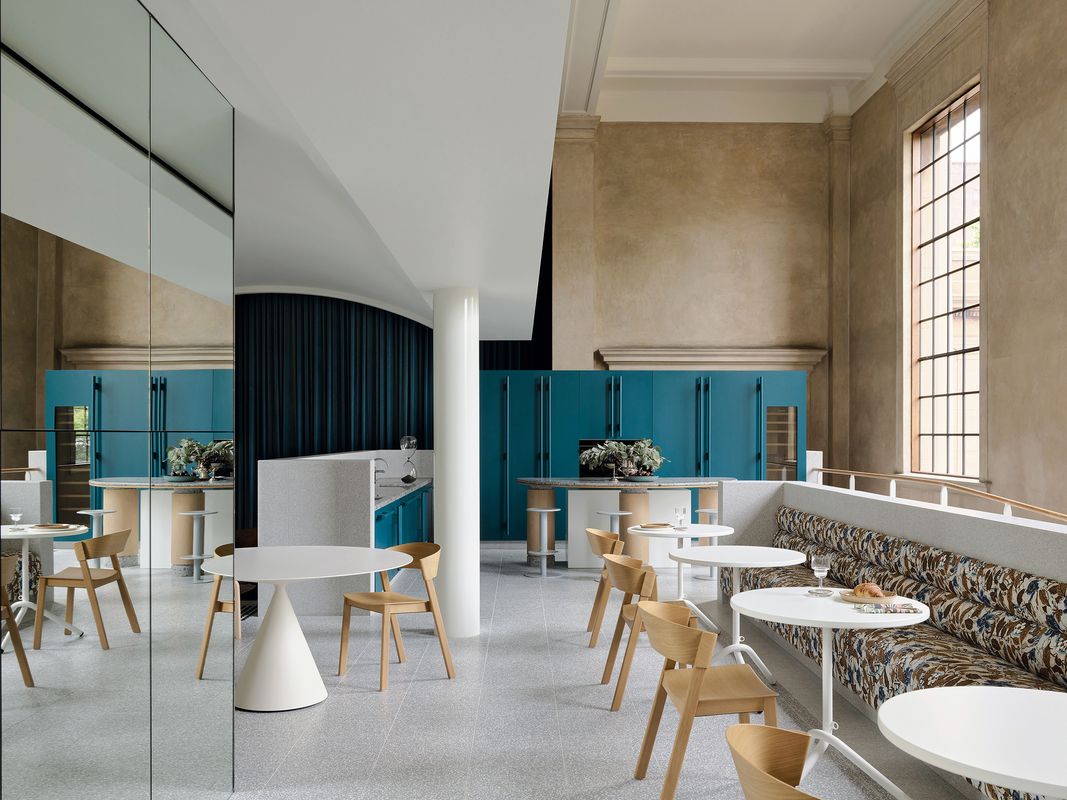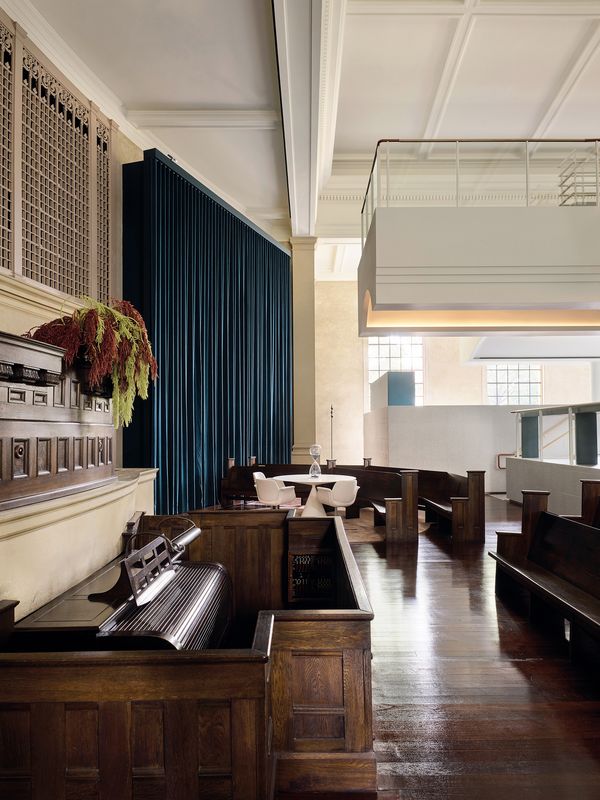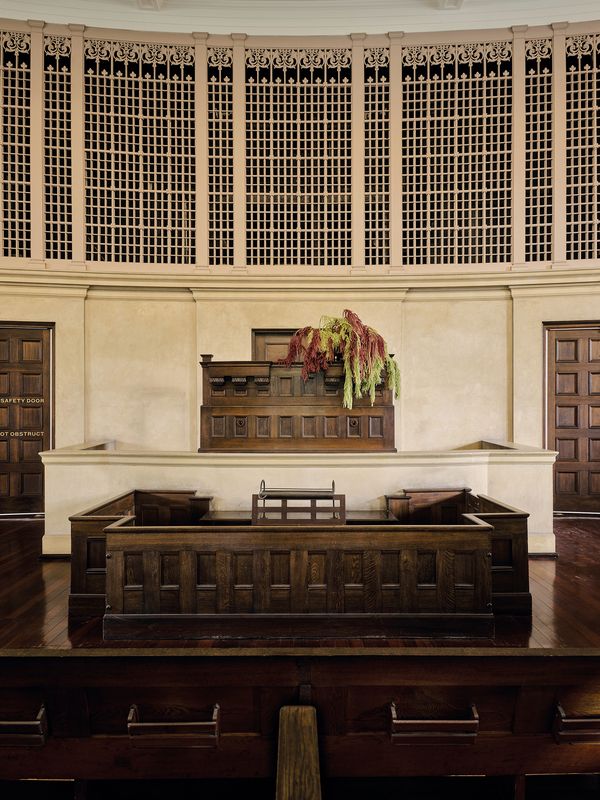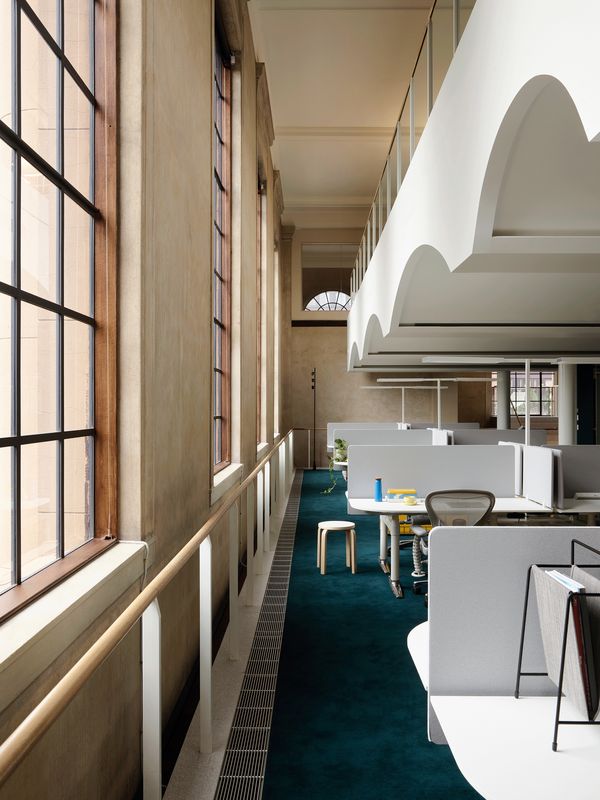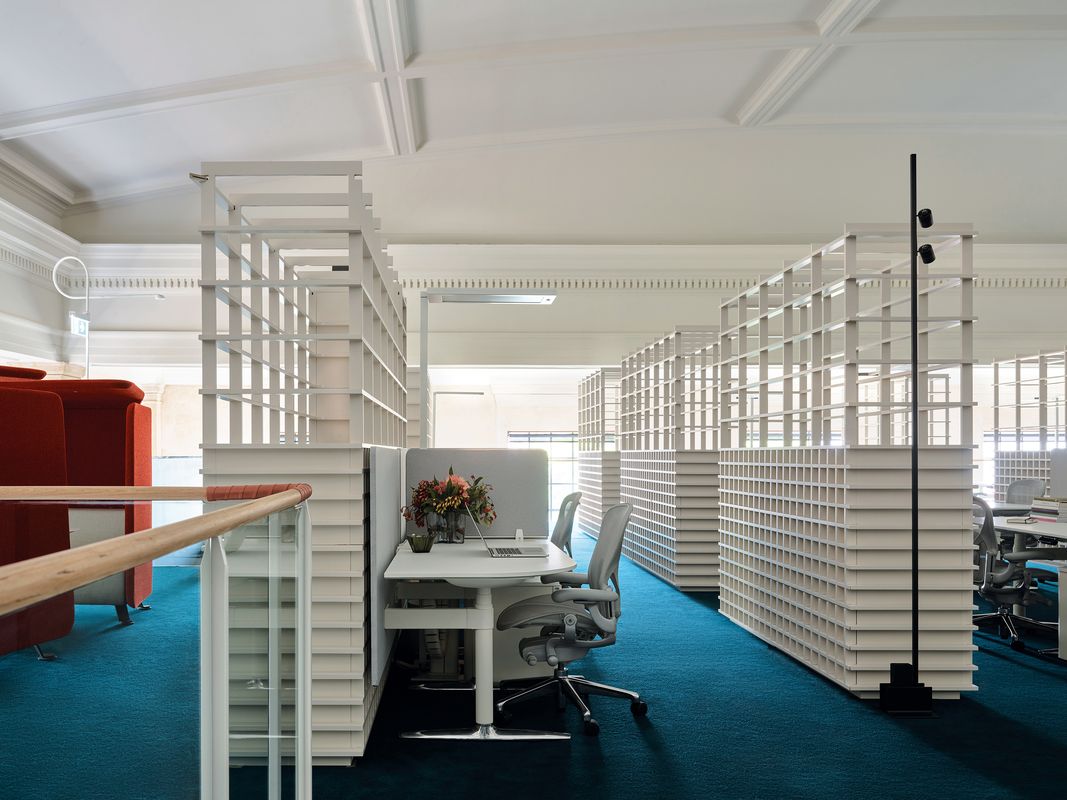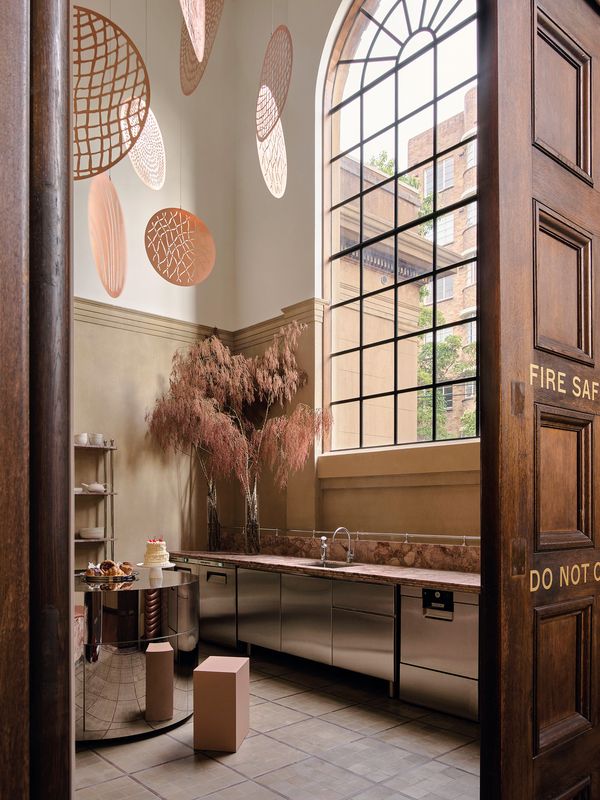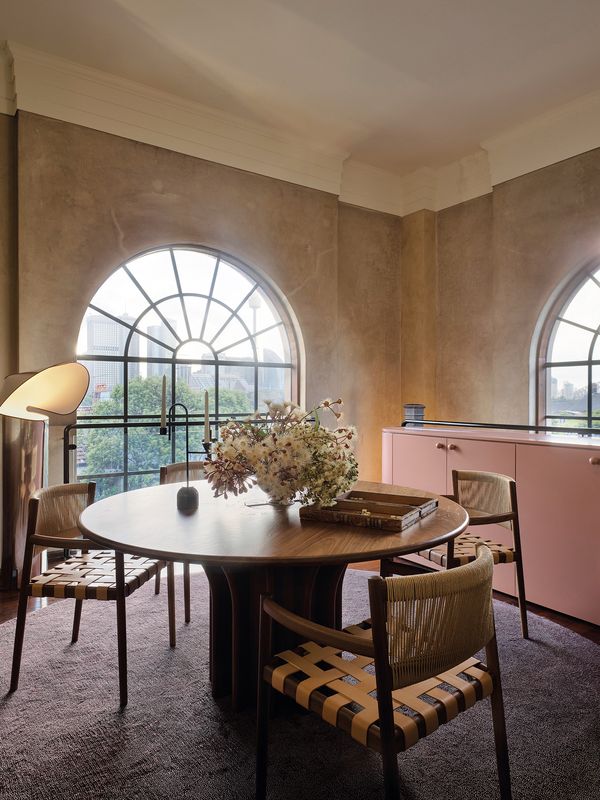The second half of the twentieth century saw unprecedented transformation of our cities. Modernist ideas of architecture and planning swept aside thousands of years of tradition and collective knowledge, wiping the slate clean in the name of progress and profit. Sydney suffered devastatingly under this wave, losing much of its recent and Indigenous history.
In the 1970s, the first rumblings of concern over the destruction of Sydney’s built heritage were given voice through local community groups and, later, union bans that successfully saved many historic buildings and neighbourhoods. The 1980s saw “facadism” as a concession between heritage and development. This kept the street front as an acknowledgement of the past, but nothing of the interior – a position that clearly implied that architecture was of value to society, but interiors? Bah!
In what was once a dark, gloomy and restrained interior, new building work is light and bright.
Image: Anson Smart
The re-opening of the Queen Victoria Building in 1986 heralded a new appreciation for the importance of interior heritage as an integral component of adaptive reuse. Since that time, it is possible to trace a clear evolution in the design approach to adaptive reuse in Sydney. The ’90s and 2000s focused on reimagining the city’s industrial heritage – with Tonkin Zulaikha Greer Architects as its most recognized exponent – and now that designers are more comfortable and confident with adaptive reuse, landmark projects like Yirranma Place by SJB are representing a new and very promising phase.
Yirranma Place had its first incarnation in 1927 as a place of worship. Samuel Thorp designed the church in a sedate, neoclassical manner. Politely fitting in with the urban context of Darlinghurst, it became, over the years, a neighbourhood landmark. Its next reincarnation, in 2012, was by Bates Smart, who sensitively reconfigured the interior into a private residence. Ten years later, SJB has given back the space’s civic nature as the headquarters of a philanthropic foundation. The Gadigal term “yirranma” can be interpreted as “many create,” and Adam Haddow (SJB’s director of architecture) is adamant that the success of this project is attributable to the collaboration and commitment of all stakeholders. Haddow lauds the enlightened tenacity of the developer, Cornerstone, who was committed to returning the site to a more civic use; the client and principal occupier, the Paul Ramsay Foundation, which drove the brief development and its social and community engagement; and, from a technical point of view, the heritage, services and accessibility consultants that allowed the shared vision to become a reality.
A perimetral circulation zone allows for natural light to enter the workspace while providing enough distance for the old and the new architectures to hold their own.
Image: Anson Smart
Thorp’s very noble tetrastyle in antis portico was retained as the principal public entrance. However, in the spirit of the building’s new mission, the original sombre gates have been replaced by a celebratory new creation by Barkandji man Uncle Badger Bates, whose work transforms from metal into paint in a fresco- like ceiling for the portico. Whereas the gates of the church and residence were generally shut, now they are open, welcoming the community into the cafe and the event space, which doubles as a gallery showcasing the artwork of First Nations peoples. There is a clear connection between the publicly accessible parts of the space and the representation of First Nations contemporary creative arts.
The real challenge of adaptation presented itself in the former worship space – and what to do with a large, heritage-listed pipe organ. Bates Smart had resolved this by clustering residential functions around the perimeter. However, for SJB, this wasn’t a feasible option, as workplace design necessitates large floor plates. Instead, the designer installed a central two- storey structure in the place where the congregation would have sat. Haddow says he took inspiration from the strategies used by Carlo Scarpa in the Castelvecchio Museum in Verona, Italy. Elements are architecturally bold, daring to challenge at certain points and willing to embrace in others. The former preaching zone and the organ are reassigned as a large-group meeting space, as well as being open for public concerts. A perimetral circulation zone allows natural light to enter the workspace while providing enough distance for the two distinct architectures – the old and the new – to hold their own.
The architecture of Carlo Scarpa, well known for stitching old and new together, provided inspiration for solid, timeless finishes and forms.
Image: Anson Smart
The interior detailing scheme takes its cues from Thorp’s original design: grey terrazzo floors, sandy pinks and solid timbers. Joinery items reference the organ grilles and tile set outs follow established patterns. In typical SJB style, colour is not shied away from. Dark teal is used for soft finishes such as carpets and the large swathes of velvety curtains that are needed to dampen the lively acoustics of the former worship space.
SJB’s Yirranma Place is respectful of the original design and function of the building. It does, however, refuse to be deferential. There is a confidence to the project that has faith in the ability of the current design to stand on its own – not against but side-by-side with the legacy of the past. It is unashamed of who it is and what it does, and this is what marks it as a forerunner of the next stage of Sydney’s adaptive reuse story.
Charlotte Wilson senior associate, interior design at SJB will be presenting Yirranma Place at Artichoke Night School on 10 May in Sydney. For more information and to purchase tickets, see the Design Speaks website.
Products and materials
- Flooring
- Tiles from Surface Gallery, Olde English Tiles.
- Walls
- Tiles from Surface Gallery.
- Feature Stones
- Cafe from Artedomus, kitchen from Fibonacci Stone.
- Fixtures
- Agape from Artedomus, Zetr, Auburn Woodturning, Brodware, Parisi, Reece.
- Appliances
- Winnings, Harvey Norman.
- Bathroms
- Tiles by Surface Gallery. Agape basins and tapware by Artedomus.
- Lighting
- Lighting from Viabizzuno and Euroluce.
- Furniture
- able and Ta table from Ownworld. Muuto Cover side chair from Living Edge. Nau Rib table, Nau Harbour dining chair, Nau Rev Stool and Swivel Flamingo chair from Cult Design.
- Other
- Custom rug by Mika Utzon Popov in gallery. Gates on entry by Uncle Badger Bates.
Credits
- Project
- Yirranma Place
- Design practice
- SJB Sydney
Surry Hills, Sydney, NSW, Australia
- Project Team
- Charlotte Wilson, Sevda Cetin, Angela Chun, Yvonne Cai, Alex Gilmore-Johnstone
- Consultants
-
AV consultant
Peace of MInd Technology, Hub Australia
Builder Mainbrace Constructions
Electrical engineer Alland Group
Engineer Van der Meer
Hydraulic engineer Argent Consulting Group
Landscaping Black Beetle Landscape
Lighting ESD
Mechanical engineer Quantum Engineering
Project manager Creative Resolution
- Aboriginal Nation
- Built on the land of the Gadigal people of the Eora nation.
- Site Details
- Project Details
-
Design, documentation
18 months
Construction 13 months
Category Interiors
Type Adaptive re-use, Workplace
Source
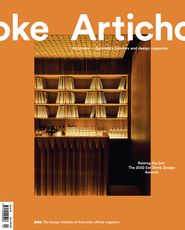
Project
Published online: 12 Apr 2023
Words:
Sing d'Arcy
Images:
Anson Smart
Issue
Artichoke, December 2022

